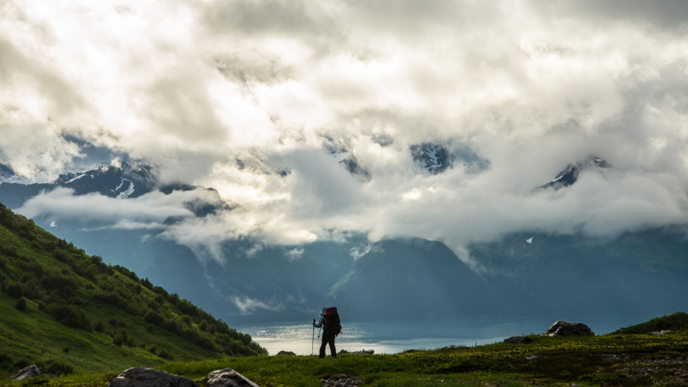Everyone seems to use the word “rugged” to describe Kenai Fjords. That’s because it is.
As a scientist doing research in the park this makes it difficult to get out into the backcountry as we’re often limited to staying near the shore using the M/V Serac, the Park’s research vessel, or justifying flying in helicopters to get to study locations. In July, however, three of us loaded up our backpacks and walked out the door of the office in downtown Seward for a three day research trip to the Source.
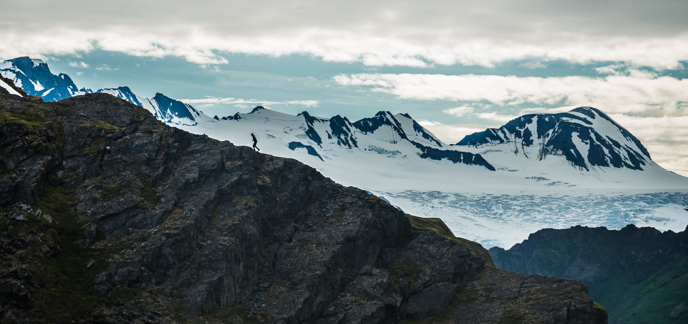
The Source is a glacier-dammed lake that fills up throughout the winter and spring and drains rapidly underneath the Bear Glacier sometime in the late summer or fall in an event known as a jökulhlaup, or Glacier Lake Outburst Flood (GLOF). It’s only about 9 miles as the raven flies from downtown Seward, but unfortunately we’re not ravens and instead have large backpacks filled with a packraft, an aluminum tripod, a fiberglass weatherproof camera housing and battery, a solar panel, 50ft of steel cable, as well as our raingear, camping equipment, and food for three days in bear cans. Why? Because, science.
Our route starts with about 3,000 ft of climbing up and over the shoulder of Bear Mountain, with views directly across the valley at the well known Mt. Marathon trail. We climb the ridge towards the summit before dropping down, traversing around it, crossing another high pass between two glaciers, and finally dropping down steep, slippery slopes to make camp above the lake. It takes us a long, demanding day, but we make it safely and are rewarded with absolutely stunning views and a visit by a mother and two cub black bears who play and forage until they notice our odd smells and disappear over a ridge.
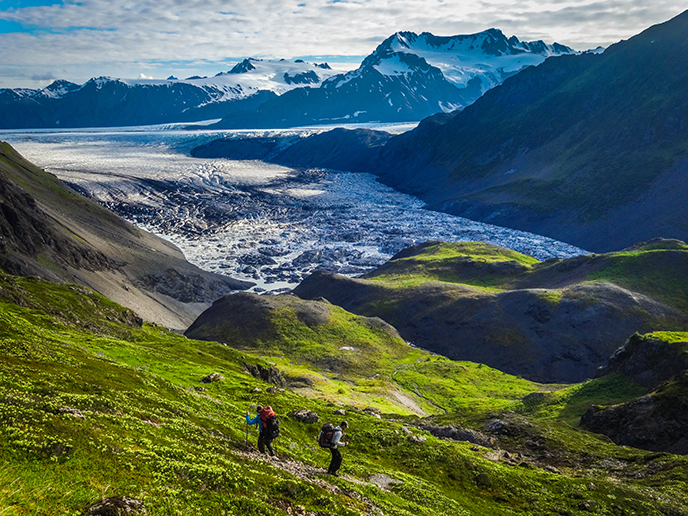
The purpose of this trip is to install a timelapse camera and water pressure sensors that will tell us more about how and why this lake fills up and drains. In 2010 researchers studied this lake and found that it has formed and drained roughly annually since about 2000. Last year, in August 2014, however, the outburst flood released enough water to breach the large beach separating Bear Glacier Lagoon from the ocean sending glacier sediment and icebergs far out into Resurrection Bay.
The mission of the National Park Service is to “preserve unimpaired the natural and cultural resources and values of the National Park System for the enjoyment, education, and inspiration of this and future generations.” As researchers with the Resource Management division, it is our responsibility to find out what those resources are so that informed decisions can be made. While jökulhlaup’s are scientifically fascinating, this also potentially threatens the safety of visitors in the lagoon, a popular kayaking destination, and is important in understanding how the massive glaciers that make up 51% of the park area are changing.
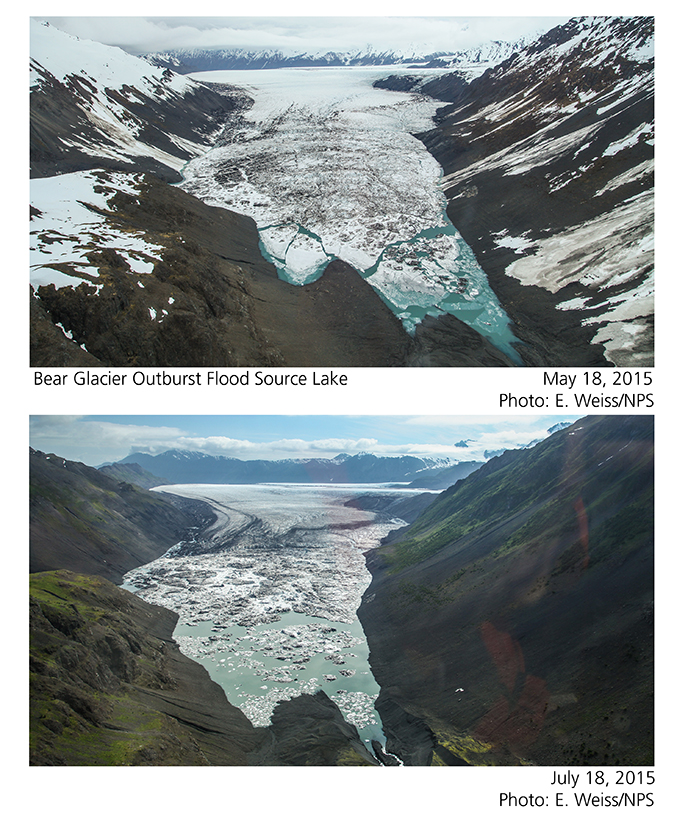
The next morning we wake up early and find a suitable place looking down on the lake for the camera, and move on to install the pressure transducers. As we inflate the packraft and get the equipment ready a cloud descends on the lake and it begins to pour rain. Paddling out onto the ice filled lake in these conditions we know there is no room for mistakes and carefully drop the weight and sensors to the bottom of the lake. By the time we get back to the camera we just have to estimate where to point the camera as the lake is still in the clouds, get it started, and walk away.
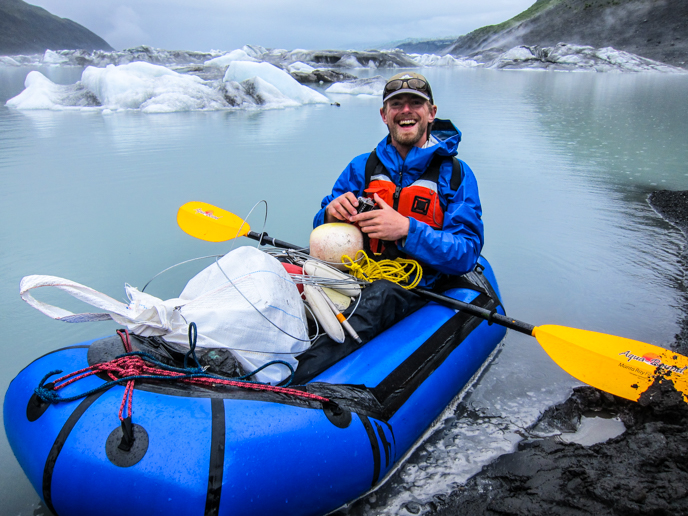
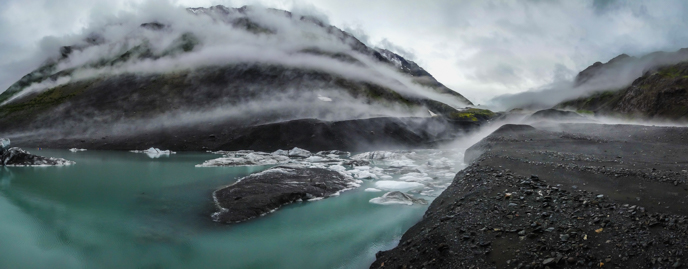
The weather cleared some for the return journey and we made it back to Seward the next day with much lighter backpacks. Now we just have to wait for the flood to happen and hope that all the equipment is working correctly and that a curious bear hasn’t chewed on it too much.
To be continued….
